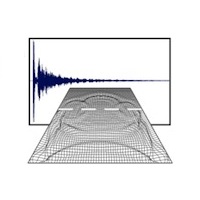Room Acoustics Modelling
Finite Difference Time Domain (FDTD) methods have been demonstrated as being appropriate for modelling sound propagation in bounded environments. Work at York has focused on a number of key areas including the development of frequency dependent absorbing and diffusing boundary conditions, sound source directivity and spatial encoding of the simulated soundfield.
However, despite giving good results, comparable with both actual measurements and other modelling methods, the synthesis of full audio bandwidth impulse responses suitable for auralization is a computationally intensive and demanding process, making it prohibitive for large spaces. Although parallel implementations for GPUs have brought computation times down to reasonable limits, memory bandwidth puts a practical upper limit on the maximum frequency that can be reproduced accurately. New methods take a hybrid approach, combining both geometric (e.g. ray-tracing) and wave-based (FDTD) modelling strategies optimised across frequency bands. Alternatively, perceptual methods consider what needs to be modelled, rather than what should be modelled, with a view to the development of real-time, interactive auralization design tools.

